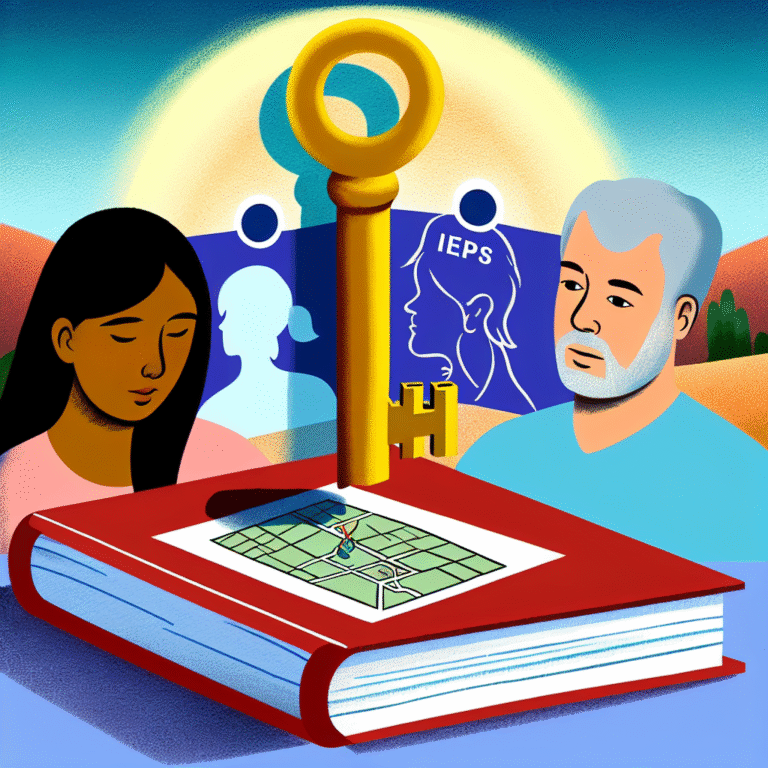
Breaking Barriers: How to Support Kids with Learning Disabilities in Completing Homework
Introduction
Homework can be a battleground for many students, but for those with learning disabilities, it often feels like an uphill climb through thick fog. The struggles are real as kids attempt to grasp concepts that may seem straightforward to their peers. Breaking barriers in the realm of homework entails assuring that every child, regardless of their learning abilities, has the support they need to succeed. In this comprehensive guide, we will delve into effective strategies, inspiring stories, and expert advice to illuminate the path toward empowering children with learning disabilities to tackle their homework confidently.
Understanding Learning Disabilities
What Are Learning Disabilities?
A learning disability isn’t synonymous with intellectual disability; rather, it reflects a discrepancy in how a person processes information. Common types of learning disabilities include dyslexia, dysgraphia, dyscalculia, and attention deficit/hyperactivity disorder (ADHD). Each manifests in unique challenges, from difficulties in reading and writing to issues with numbers and organization.
The Impact on Homework
For kids with learning disabilities, completing homework can feel like a monumental task. Research indicates that these students often experience heightened levels of frustration, anxiety, and disengagement when faced with traditional homework environments. Understanding their struggles leads us to the core of the issue: how can we effectively support them?
Strategies for Parents and Educators
1. Create a Structured Homework Environment
Establishing a dedicated, distraction-free space conducive to learning is essential. Here’s how to create the perfect homework environment:
| Element | Description |
|---|---|
| Quiet Space | A designated area low in noise and interruptions. |
| Comfortable Seating | Ergonomic chairs and desks to avoid discomfort. |
| Accessible Materials | Ensure all necessary supplies are within reach. |
Case Study: The Routine Miracle
In a suburban educational setting, a single mother of an 8-year-old boy with ADHD instituted a structured homework time and space. By dedicating the dining table for homework and setting specific hours post-school, they noticed a 50% reduction in homework completion time and an increase in focus.
2. Personalize Assignments
One size does not fit all, especially when it comes to learning disabilities. Tailoring assignments based on each child’s unique strengths and weaknesses can drastically improve engagement levels.
Case Study: Differentiated Learning in Action
At an urban middle school, a teacher modified math assignments for students with dyscalculia. Instead of traditional problems, she incorporated real-life scenarios—like budgeting for a school trip—which captured her students’ interests and fostered genuine enthusiasm for learning.
3. Implement Technology Aids
Using technology can be a game-changer. Tools like audiobooks, text-to-speech software, and note-taking apps can significantly assist children with learning disabilities in fulfilling homework tasks more efficiently.
| Tech Tool | Benefits |
|---|---|
| Audiobooks | Helps auditory learners grasp content without reading difficulties. |
| Text-to-Speech | Provides verbal assistance for written assignments, easing constraints of writing manifesting from dyslexia or dysgraphia. |
| Note-taking Apps | Allows for organizing thoughts in a less intimidating digital format. |
4. Communicative Collaboration
Maintaining an open dialogue among parents, educators, and the students themselves fosters a supportive network. Regular meetings can help to monitor progress, address challenges, and brainstorm solutions collaboratively.
Case Study: The Triumph of Teamwork
At a local elementary school in California, regular parent-teacher conferences were established around students with learning disabilities. The collaborative strategy led to the development of an individualized homework support system, showing significant improvement in overall completion rates and boosted self-esteem for students.
5. Build Self-Advocacy Skills
Encouraging children to voice their needs is vital. Teaching them self-advocacy skills equips them to articulate their challenges effectively, fostering autonomy in their educational journey.
6. Use Positive Reinforcement
Recognizing effort and celebrating small victories can boost a child’s motivation immensely. Positive reinforcement can come in various forms, from verbal praise to small rewards or privileges.
The Role of School and Community
1. Training Educators
Schools must invest in professional development programs that equip educators with the skills necessary to recognize and support students with learning disabilities. Effective strategies can make a significant difference in how homework is approached.
2. Engage Community Resources
Many communities offer tutoring programs and support groups for families navigating the challenges of learning disabilities. Engaging with these resources provides additional avenues for help.
Case Study: The Community Initiative
In a partnership between a local library and a nonprofit organization, specialized homework help sessions were launched for children with learning disabilities. These sessions offered tailored guidance, presenting homework as less of a chore and more of an engaging activity.
Building a Positive Mindset
Encouraging a Growth Mindset
Helping children understand that challenges are part of the learning process is essential in fostering resilience. Teaching them that effort, not inherent ability, leads to success can change their outlook on homework.
| Mindset Shift | Example |
|---|---|
| Mistakes as Learning | Encourage viewing errors as learning opportunities rather than failures. |
| Celebrating Progress | Focus on the journey of improvement instead of solely on end results. |
Measuring Success
Track Progress
Implementing a system for tracking homework completion and the quality of work can help parents and teachers gauge success over time. A simple chart documenting daily and weekly assignments can facilitate this process.
Regular Feedback
Feedback loops should be established—both between parents, educators, and the students themselves. Constructive critiques, focused on what went well, highlight areas for improvement while simultaneously affirming progress.
Conclusion
Breaking barriers for kids with learning disabilities in completing homework doesn’t happen overnight, but armed with the right strategies, we can make significant strides. In collaboration with parents, educators, and communities, we can create an environment where every child not only feels supported but is excited to tackle homework challenges. By transforming homework from a daunting task into a structured, engaging experience filled with growth and understanding, we can help illuminate a path toward success for all students. Together, we can foster a generation where learning disabilities are seen not as hurdles, but as unique avenues of potential and creativity.
FAQs
1. What should I do if my child refuses to do homework?
Start by having an open conversation with your child. Understand their reasons for refusal and explore alternatives such as breaking tasks into smaller, manageable parts.
2. How can I tell if my child has a learning disability?
Signs may include persistent difficulties in reading, writing, or mathematical skills despite average or above-average intelligence. Consulting a professional for a formal assessment is vital.
3. Are there specific subjects that are harder for kids with learning disabilities?
Yes, subjects that rely heavily on reading and writing, such as language arts and history, may pose more challenges for children with dyslexia or dysgraphia.
4. How can teachers help students with learning disabilities during homework time?
Teachers can provide differentiated assignments, offer more time for task completion, and create resource hubs with assistive technology tools available for students to utilize.
5. Can homework accommodations be made for standardized testing?
Yes, accommodations such as extended time, the use of calculators, or alternative testing formats can often be arranged for students with identified learning disabilities to ensure they have equal opportunities to exhibit their knowledge.
By integrating these strategies, we can ensure that every child, irrespective of their learning difficulties, can bravely face homework challenges and emerge victorious. Let us all commit to breaking barriers and fostering a supportive world of learning!






